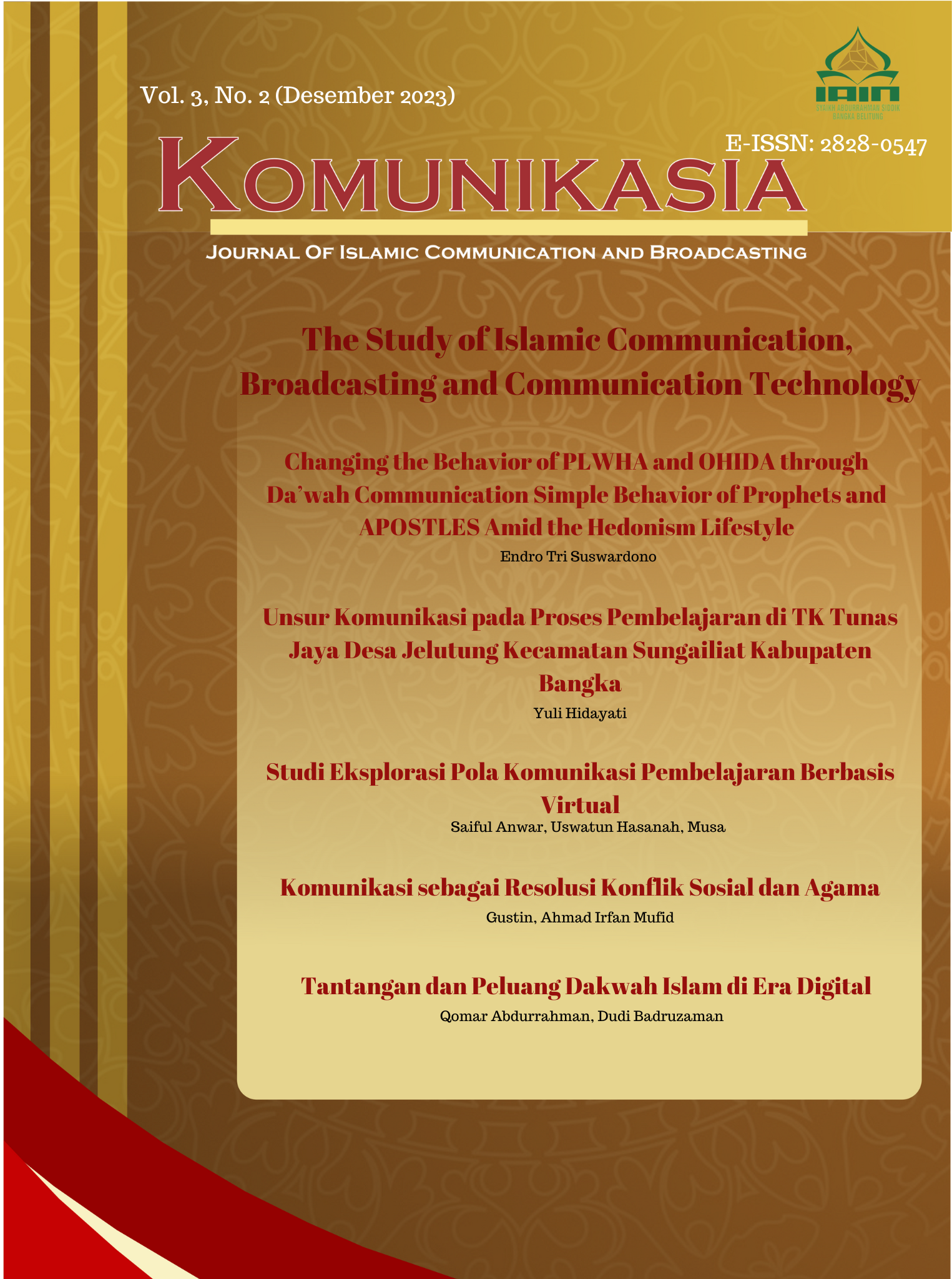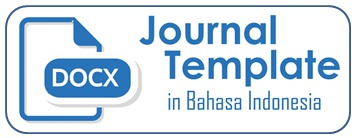UNSUR KOMUNIKASI PADA PROSES PEMBELAJARAN DI TAMAN KANAK-KANAK (TK) TUNAS JAYA DESA JELUTUNG KECAMATAN SUNGAILIAT KABUPATEN BANGKA
Abstract
This research discusses the elements of communication in the learning process at Tunas Jaya Sungailiat Kindergarten (TK) in Bangka. The theory used is based on the elements of communication according to Lasswell, which consist of communicator, message, communicant, media, and effect. The research design employed is descriptive with a qualitative approach. Data collection techniques include observation, interviews, and documentation. The research findings indicate that the elements of communication in the learning process at TK Tunas Jaya have been executed effectively. These elements include: Communicator, represented by the teachers at TK Tunas Jaya in the Sungailiat Sub-district, Bangka Regency. Message, conveyed by teachers in both verbal and non-verbal forms. Communicant, involving TK students and their parents. Media, utilizing smartphones supporting the WhatsApp application, enabling communication in groups. Effect, resulting in increased activity among children in the learning process. Based on these findings, it is suggested to improving their communication skills to effectively convey messages to children. Teachers are also encouraged to introduce other innovations in the learning process, ensuring that all early childhood students with diverse characteristics can quickly grasp the learning material.
Downloads
Copyright Notice
Komunikasia: Journal of Islamic Broadcasting and Communication is under the Creative Commons Attribution 4.0 International (CC-BY 4.0) License, according to which:
1) Authors retain copyright and grant the journal the right to first publication, with the work simultaneously licensed under the Creative Commons Attribution (CC-BY 4.0) that allows the sharing of articles published with the acknowledgment of authorship and the initial publication in this journal.
2) The authors are authorized to make additional contracts separately for distribution of the version of the work published in this journal (for example, publication in an institutional repository or as a chapter of the book), as long as there is recognition of authorship and initial publication in this journal.
3) Authors are authorized and encouraged to publish and distribute their work online (for example, in institutional repositories or on their personal pages) at any time before or during the editorial process, as it increases the impact and reference of the published work.



















